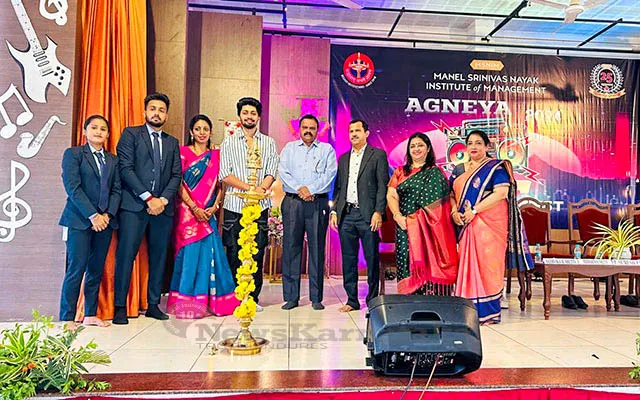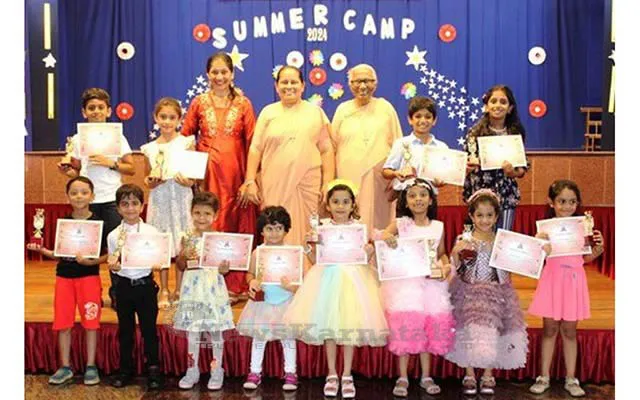 Dr V Basil Hans, Associate Professor of Economics and Dean, Faculty of Arts, St Aloysius Evening College, Mangaluru
Dr V Basil Hans, Associate Professor of Economics and Dean, Faculty of Arts, St Aloysius Evening College, Mangaluru
Thanks to LPG, India’s business environment is changing very fast. The dimensions of business – economic, political, social and cultural have been impacted by the global dynamics and domestic compulsions. Changes in inputs and changes in output are clearly visible.
In India, we now have the philosophies of “inclusive growth” “green and clean growth”, “growth with empowerment” and so on. This has boiled down to the grass toot level too – what with the concepts of smart cities, smart villages etc.
Those who study these aspects and those who are connected with policy-making related to these issues need to adopt a systematic approach or methodology to find out the true relationship between the variables connected in the growth process. One such variable is income.
National Income, per capita income and disposable income are macro concepts that help measure economic growth. We have the celebrated purchasing power parity theory of Gustav Cassel that establishes the correlation of buying and value of money.
Income is the sum of all the wages, salaries, profits, interest payments, rents, and other forms of earnings received… in a given period of time. Income per capita has been increasing steadily in almost every country. Many factors contribute to people having a higher income such as education, globalisation and favourable political circumstances such as economic freedom and peace. Increase in income also tends to lead to people choosing to work fewer hours. Developed countries (defined as countries with a “developed economy”) have higher incomes as opposed to developing countries tending to have lower incomes.
M (currency) and M’ (credit) – both are on the rise
A rise in income in an economy – among other factors – is due to rapid urbanisation and the growth of the manufacturing/industrial sector – rise in the velocity of money. In India and also in cities like Mangaluru it is the service-sector led growth that is visible and phenomenal. Manufacturing may not take its place immediately though we have the ‘Make in India’ campaign started recently.
Urbanisation has impacts, not only on an individual, but also on household income, as is broadly reflected and manifested in the following facets of relationships and processes =
a. Urban centres constitute the points of contact with the outside world
b. Cities are the loci of political and economic power
c. Urban areas are agents and points of diffusion of social change, especially in their immediate hinterlands.
d. Cities are also the receptacle of talent and constitute concentrated human resource bases
e. Cities provide economies of scale and agglomeration and therefore, are havens of investment.
Some complex situations –
- Formal vs. Informal sector
- Rural Urban migration spillover negative externalities, bandwagon effect, etc.
- Yet to be best e-governance
Urbanisation and Smart Cities
The world is now half urban. In 2008, human kind achieved a momentous milestone. For the first time in history, half of the world‘s population, or 3.3 million people, lived in urban areas(UNFPA, 2008). Everyday about 1.93 lakh new city dwellers are added to the world‘s urban population, which translate to slightly more than two people every second. Interestingly, the growth in cities in the developing world is ten times that of cities in the developed world. Annually, cities in the developing world grew at a rate of 2.5 per cent in 1990s compared to the annual growth rate of 0.3 per cent in the developed world. Cities are engines of growth for the economy of every nation, including India. Nearly 31% of India’s current population lives in urban areas and contributes 63% of India’s GDP (Census 2011). With increasing urbanization, urban areas are expected to house 40% of India’s population and contribute 75% of India’s GDP by 2030. This requires comprehensive development of physical, institutional, social and economic infrastructure. All are important in improving the quality of life and attracting people and investments to the City, setting in motion a virtuous cycle of growth and development. Development of Smart Cities is a step in that direction.
Urbanisation and Infrastructural problems
Infrastructure is consumed by the cities! The plight of the urban poor is no doubt real and 33 per cent of a big city‘s population lives below the poverty line, which often means living in sub-human conditions. About 19 per cent of the population in cities still does not have access to running water.
Despite urbanisation and modernisation, the health infrastructure in general is inadequate; those for women are inaccessible and unaffordable to say the least. Since these are times of increasing socio-cultural, economic and political mobility of women in the urban areas, squeezing space and time for healthy living and working is a matter of concern. Work-life balance, domestic pressures and violence, insecurity of women even in the streets and vehicles, harassment and subjugation are all having a bearing on their health and marginalisation. There is, therefore, a need for holistic health for women, and their inclusive growth today. A Mangaluru grows Mangalurans also need to grow economically, socially and ethically.
Cost of living in Mangaluru is rising but is not very high (see Table 1).
| Table 1: Cost of Living Index in Mangaluru |
| Cost of Living Index (Excl. Rent): | 22.88 |
| Rent Index: | 5.48 |
| Groceries Index: | 22.09 |
| Restaurants Index: | 13.62 |
| Cost of Living Plus Rent Index: | 14.64 |
| Local Purchasing Power: | 86.88 |
Eating out– common today – Rs 65 inexpensive restaurant) to 650 (for 2) in midrange restaurant.
Cost of living in Mangaluru is 12.55% lower than in Bangalore (Info)Our estimator (with default settings) estimate monthly expenses for a single person at 18,652.97Rs and for a four person family at Rs.65,297.40 (without rent). Average Monthly Disposable Salary (Net after Tax.
You would need around 118,510.58Rs in Mumbai to maintain the same standard of life that you can have with 70,000.00Rs in Mangaluru (assuming you rent in both cities). This calculation uses our Cost of Living plus Rent Index to compare cost of living. This assumes net earnings (after income tax) Rs.30, 133.33 (see Table 2).
| Table 2: Indices Difference Between Mumbai & Mangaluru |
| Consumer Prices in Mumbai are 27.73% higher than in Mangaluru |
| Consumer Prices Including Rent in Mumbai are 69.30% higher than in Mangaluru |
| Rent Prices in Mumbai are 261.84% higher than in Mangaluru |
| Restaurant Prices in Mumbai are 51.21% higher than in Mangaluru |
| Groceries Prices in Mumbai are 37.16% higher than in Mangaluru |
| Local Purchasing Power in Mumbai is 10.95% lower than in Mangaluru |
Mangalurans spend about 38.3% of their income in marketing (household purchases), 17.8% on monthly rent, 14.3% on transportation, 9.9% on clothing and shoes, 8.5%von sports and leisure and the rest on restaurants and utilities
Mangaluru – Emerging
McKinsey & Company in a recent report: By 2025 India; a NI growth of 7.3% and states, clusters and cities’ further states rapid urbanisation and associated income growth will propel high-performing states to per capita income levels similar to those of today’s middle-income nations. There will be 69 metros (now we have 54). The emerging cities include Jamnagar, Dehradun, Cuttack, Bhavnagar, Kolhapur, Vellore, Amaravati, Ajmer, Udaipur, Sangli, Nanded and Mangaluru.
Needs growth not simply vast and fast but sustainable
I wish to see Mangaluru setting as an example as how a smart city should be with well-planned infrastructure, roads, clean water supply, proper drainage, play areas for children and with efficient functioning of various Government agencies, increasing the green coverage of the city. & creating an (f) air harmony.
Mangaluru – needs to develop, not just grow
- 499,487 As on 2011 census. 623 thousand population (2016). DK is second in population density in State.
- A two-tier city but not a metro. Smart City: Utopia? Only smart people?
- Bengaluru gets all attention?
- Guidelines say cities with a population of 5 lakh to 10 lakh, as per Census 2011, will be chosen for the Smart City plan. Now, Mangaluru is looking at bringing in two villages with a combined population of 80,000 under its fold to swell the numbers beyond the magical 5-lakh mark. Moodushedde and Bala are the villages expected to give Mangaluru a big push. Moodushedde, about 22 km from the city, is located on the way to Moodbidri; Bala is a 25-minute drive towards Surathkal.
- Urban or our bane? (e.g. roads, pavements, drainage and SWM, drinking water, quality energy supply, pollution control and other civic amenities); jobs?
- DK: Similarly a cause of concern is the decline in workforce participation rate (WPR). In 11 Districts, WPR has declined; highest decrease in Dakshina Kannada (-2.2%).
- Criteria: Education, Banks, Healthcare good but other areas need uplift – e.g. rapid transit system, clean market yards, bus terminus, flyovers, state of the art Ranga Mandira, airport etc.
- In terms of construction, we are the fastest in the state.
Suggestions
Balance urban and suburban projects; attract businesses; foster academia-industry linkages; encourage community participation; ensure all round the year water security. Regulations on housing and commercial complexes; Noise and air pollution control to be stricter; Skill development among youth; more greenery (e.g. develop Kadri Park); Entitlements rather than subsidies for the poor; and communal harmony not to be diluted.
About the author:
Dr V Basil Hans has been teaching at St Aloysius College institutions for the past three decades. He has produced six MPhils and three PhDs. He has written more than 200 articles in journals, books and newspapers in English and Kannada. He is serving as honorary editor in more than 30 journals. He has presented papers in more than 75 conferences. He has written more than 20 books. His book on Digital Banking will be translated into eight foreign languages.


















